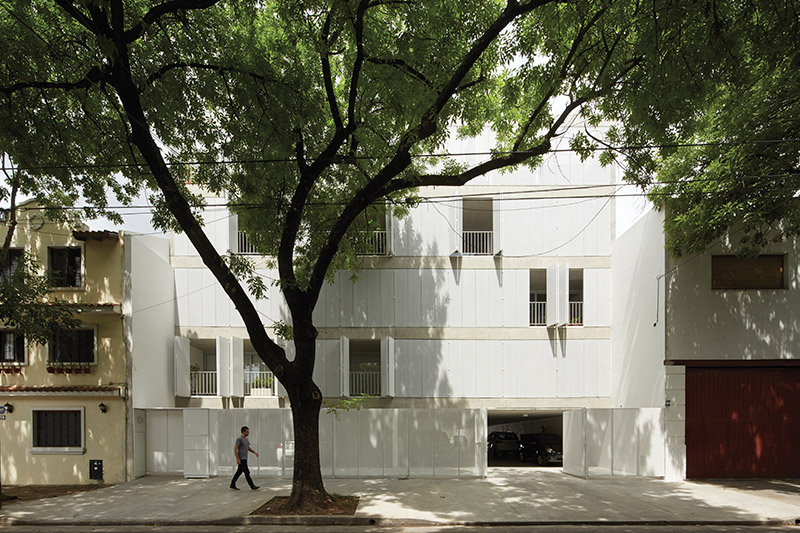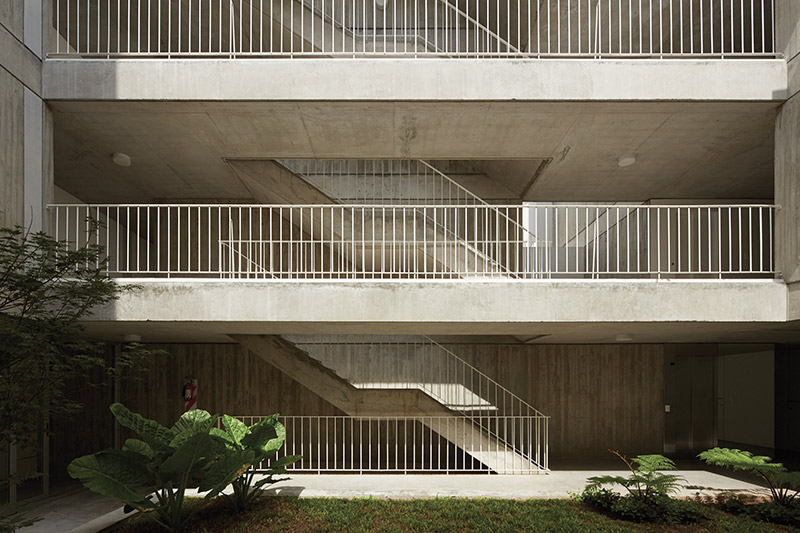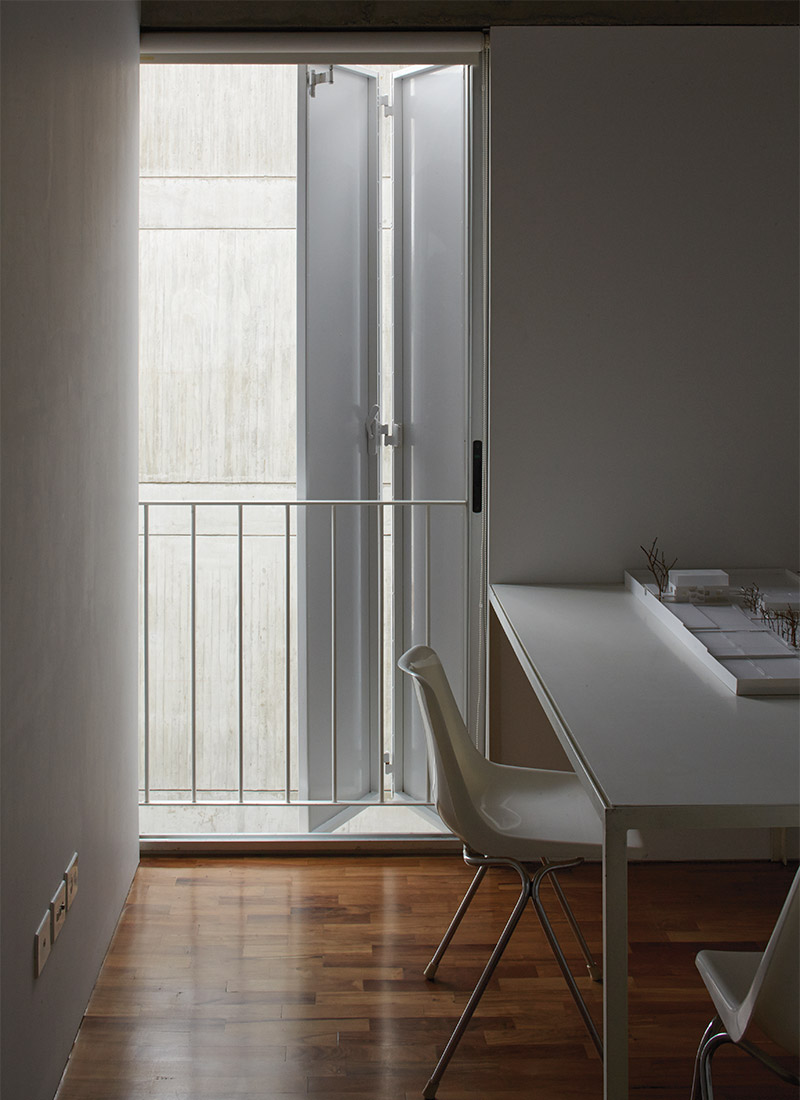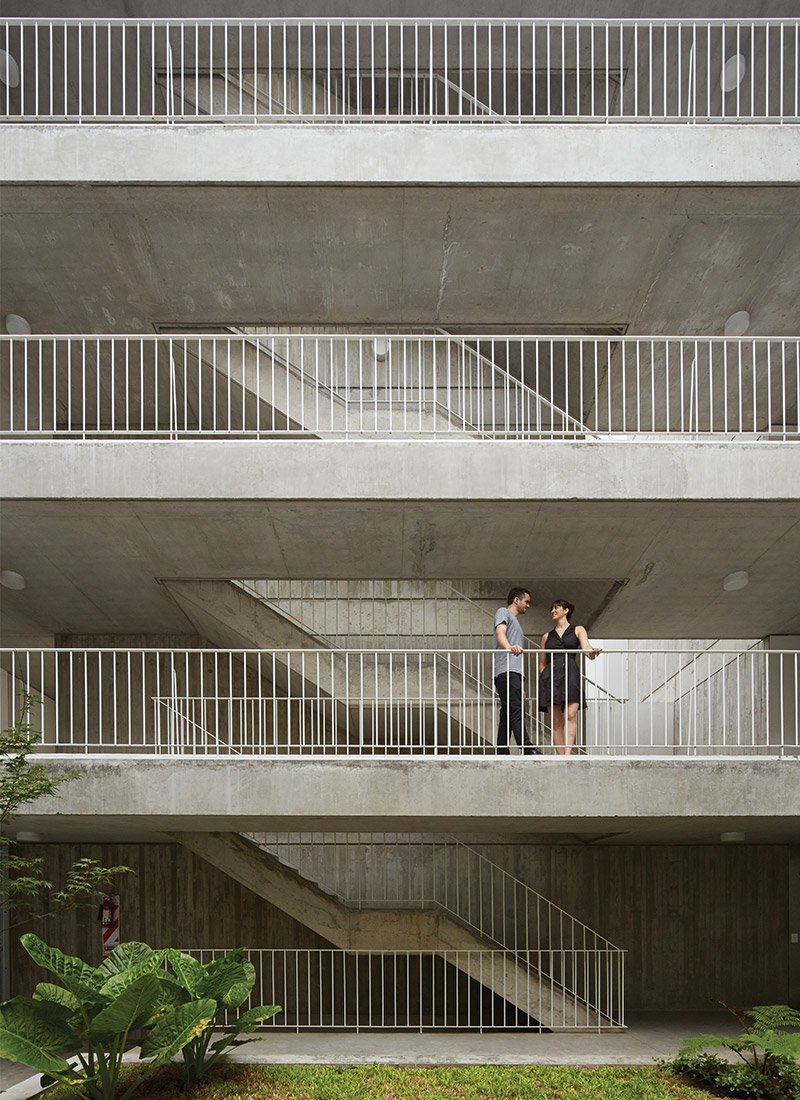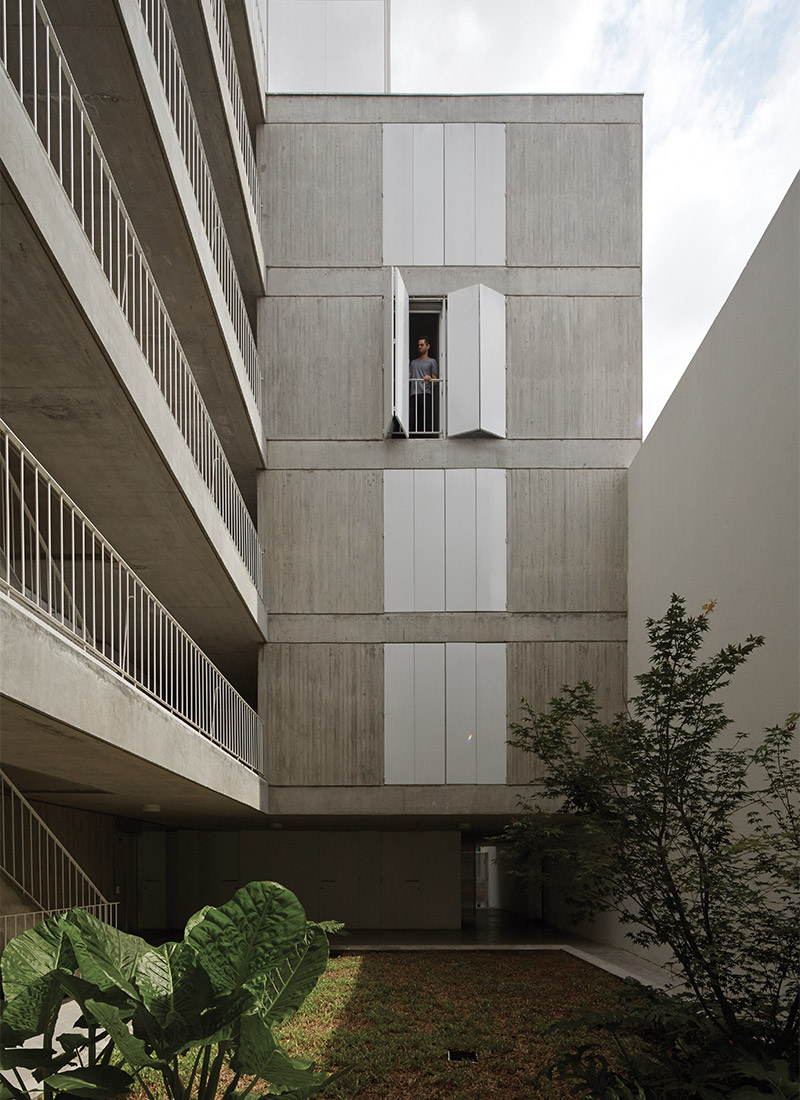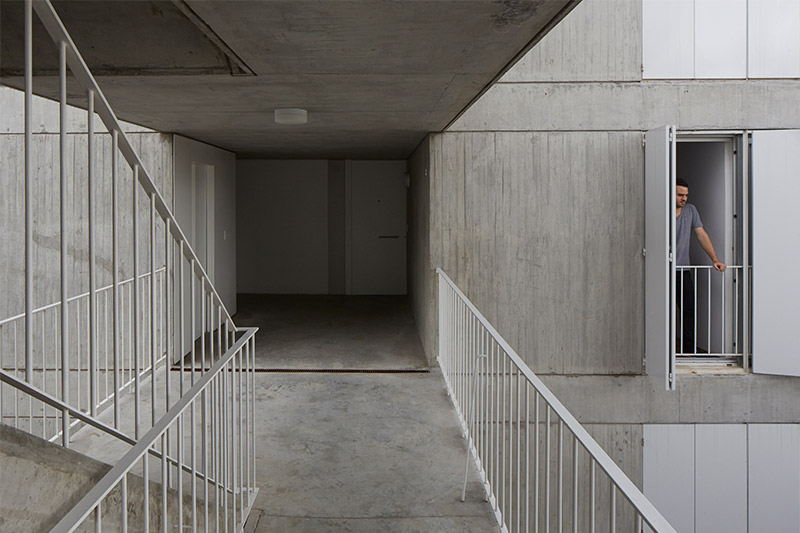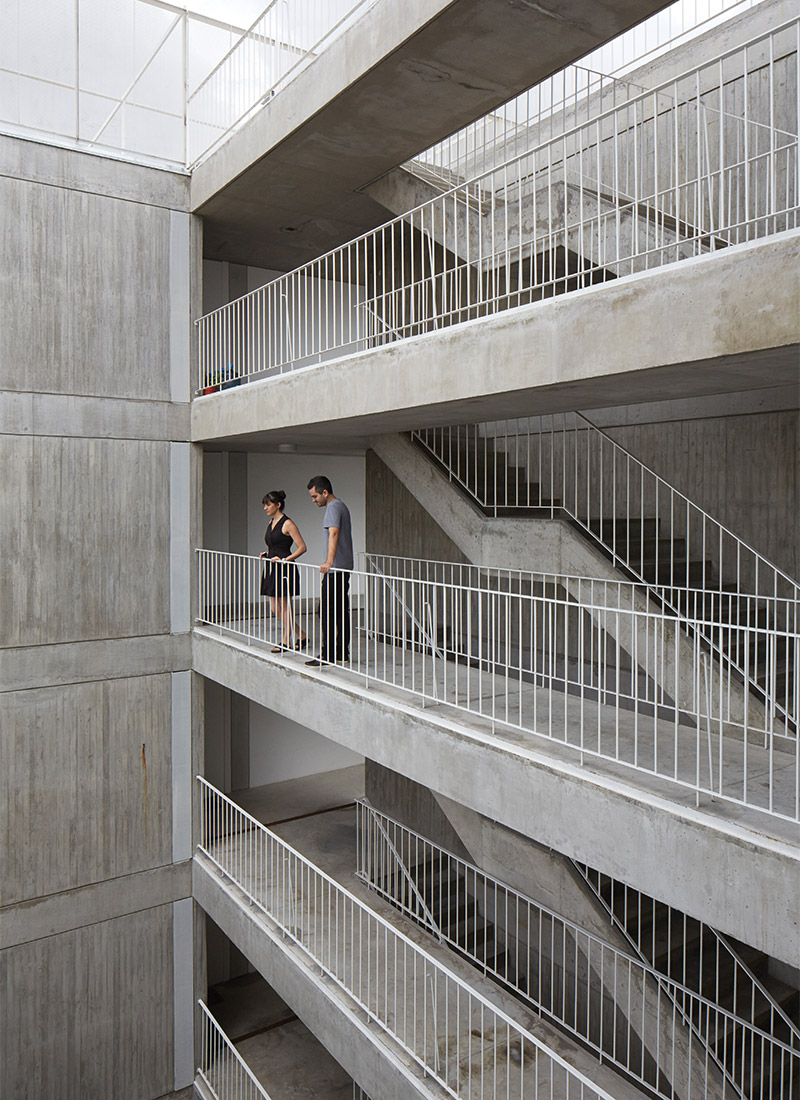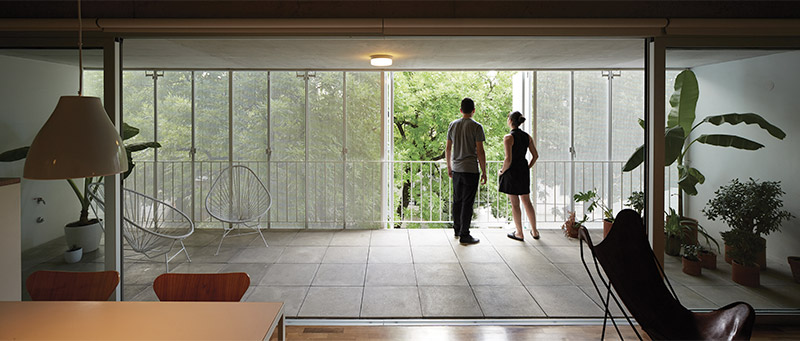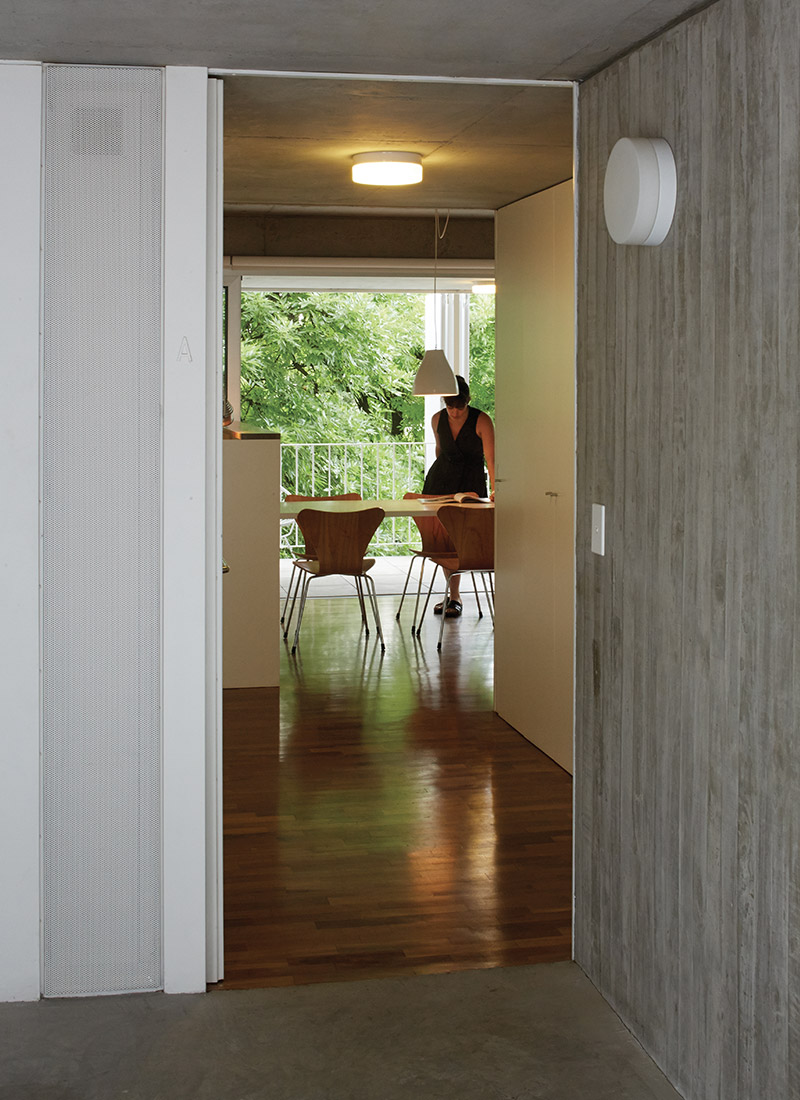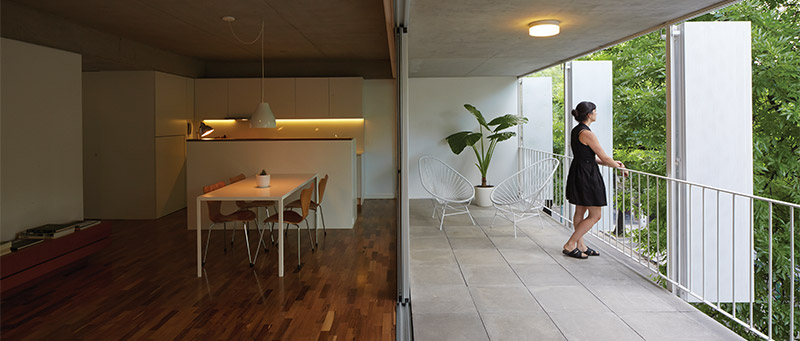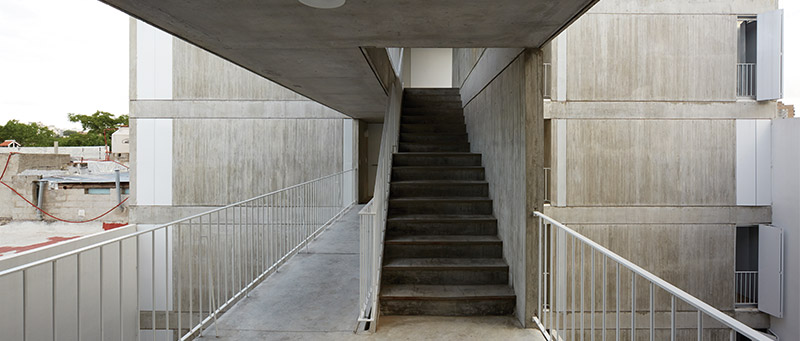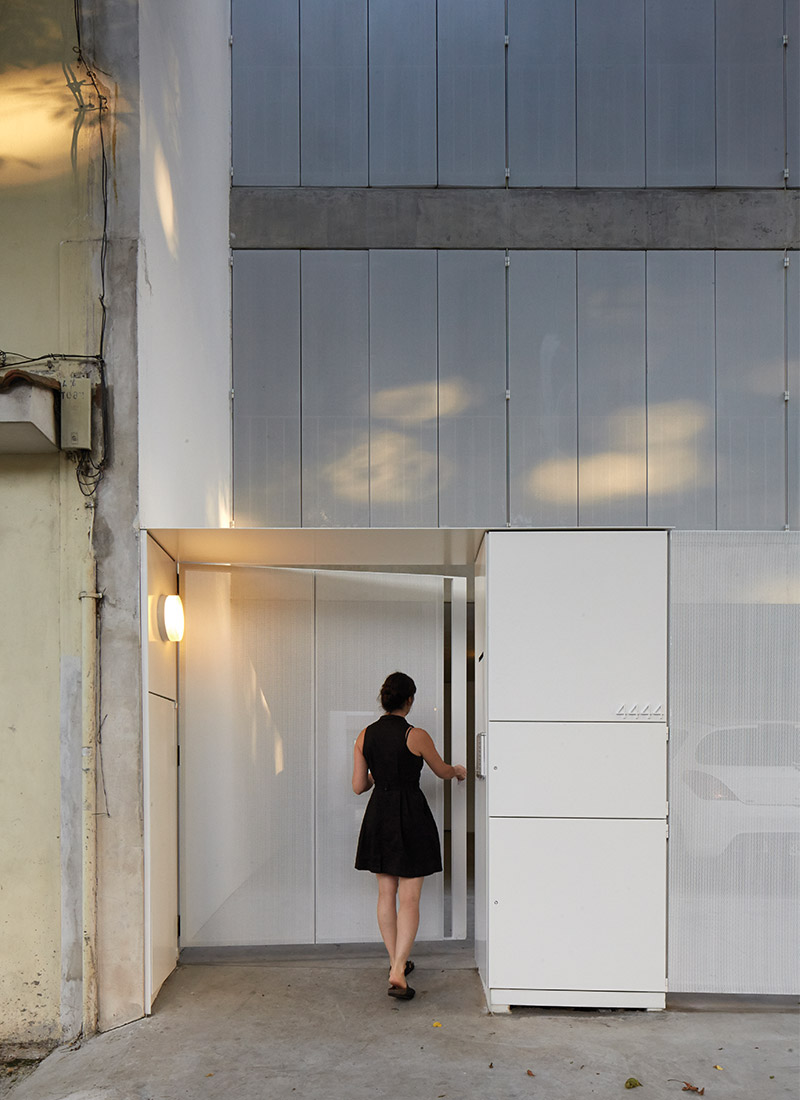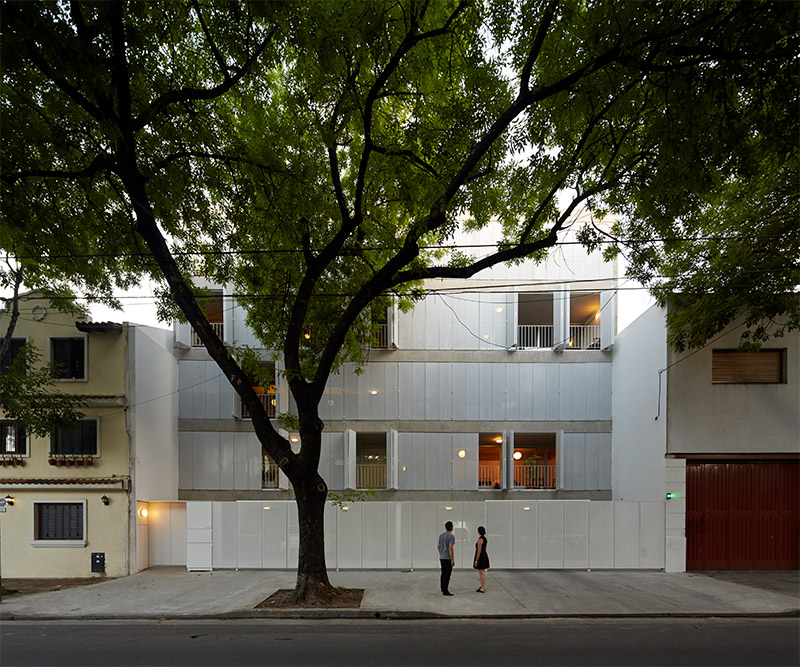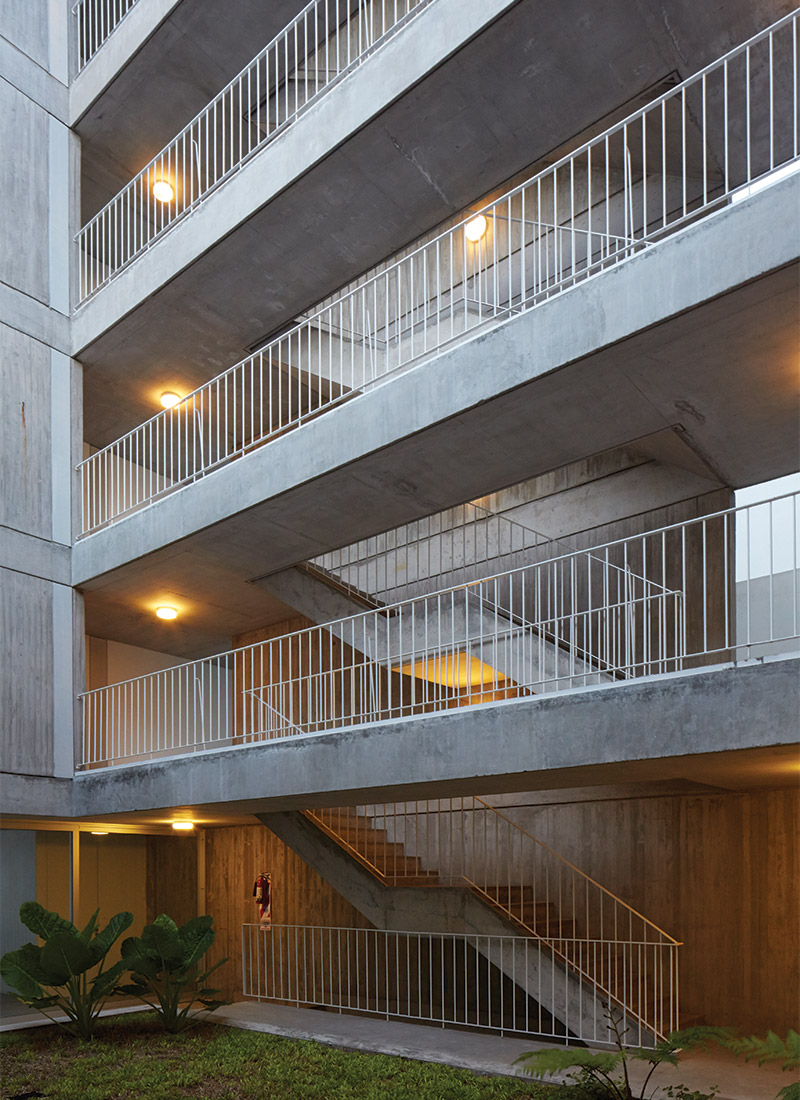Esteban Tannenbaum
Sucre 4444
2013
Buenos Aires, Argentina
Text from the architects:
|
The project was started by a group of small investors in search for apartments. Some were looking for their first home, others as investment. This group committed to a model of "fideicomiso al costo" (trust fund), wherein the land is purchased with initial capital from the investors and the remaining of the cost is paid in installments to finance construction. Under this system, the architects in charge of the project become their own entrepreneurs and gain greater margins of freedom in their work.
Todas las vigas son de 45cm de altura, las losas toman el nivel superior en los estares y dormitorios y el nivel inferior en los locales húmedos, balcones, halles y circulaciones. Esto permitió reducir las alturas de carpinterías de aluminio, madera y chapa a 2.25m. Las fachadas están compuestas por un sistema de vigas de hormigón visto y postigos plegadizos, los cuales aportan al conjunto un carácter de uniformidad en constante movimiento. |
